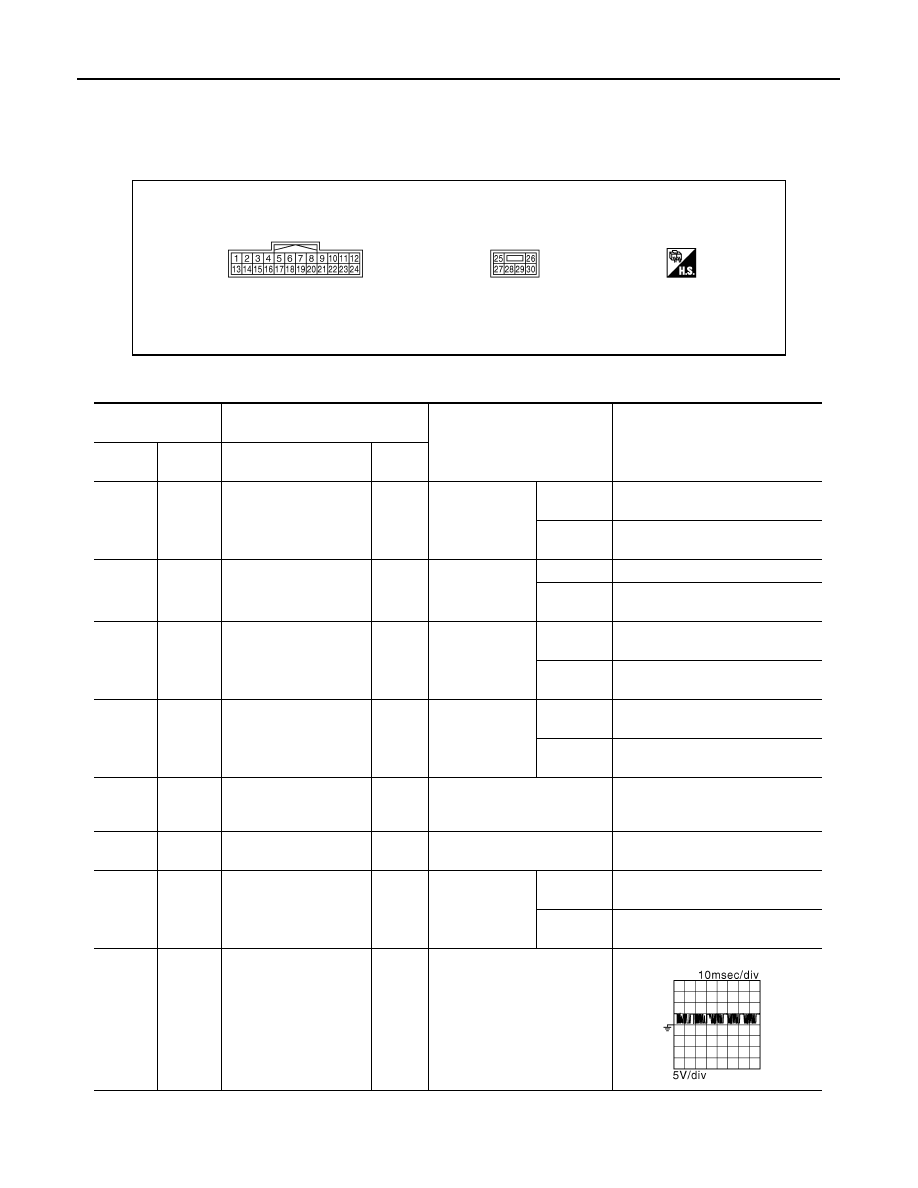Nissan Murano Z51 (2012 year). Manual - part 53

MIR-28
< ECU DIAGNOSIS INFORMATION >
[WITH ADP]
AUTOMATIC DRIVE POSITIONER CONTROL UNIT
AUTOMATIC DRIVE POSITIONER CONTROL UNIT
Reference Value
INFOID:0000000007687751
TERMINAL LAYOUT
PHYSICAL VALUES
JMJIA1389ZZ
Terminal No.
(wire color)
Description
Condition
Voltage (V)
(Approx.)
+
-
Signal name
Input/
Output
1
(Y)
Ground
Tilt switch up signal
Input
Tilt switch
Operate
(up)
0
Other than
above
5
2
(GR)
Ground
Changeover switch RH
signal
Input
Changeover
switch position
RH
0
Neutral or
LH
5
3
(SB)
Ground
Mirror switch up signal
Input
Mirror switch
Operated
(up)
0
Other than
above
5
4
(LG)
Ground
Mirror switch left signal
Input
Mirror switch
Operated
(left)
0
Other than
above
5
5
(R)
Ground
Door mirror sensor (pas-
senger side) up/down
signal
Input
Door mirror RH position
Change between 3.4 (close to
peak) 0.6 (close to valley)
6
(Y)
Ground
Door mirror sensor (driv-
er side) up/down signal
Input
Door mirror LH position
Change between 3.4 (close to
peak) 0.6 (close to valley)
7
(P)
Ground
Telescopic switch for-
ward signal
Input
Telescopic
switch
Operate
(forward)
0
Other than
above
5
8
(LG)
Ground
UART communication
(TX/RX)
Output
Ignition switch ON
JMJIA1391ZZ
Revision: 2013 February
2012 MURANO